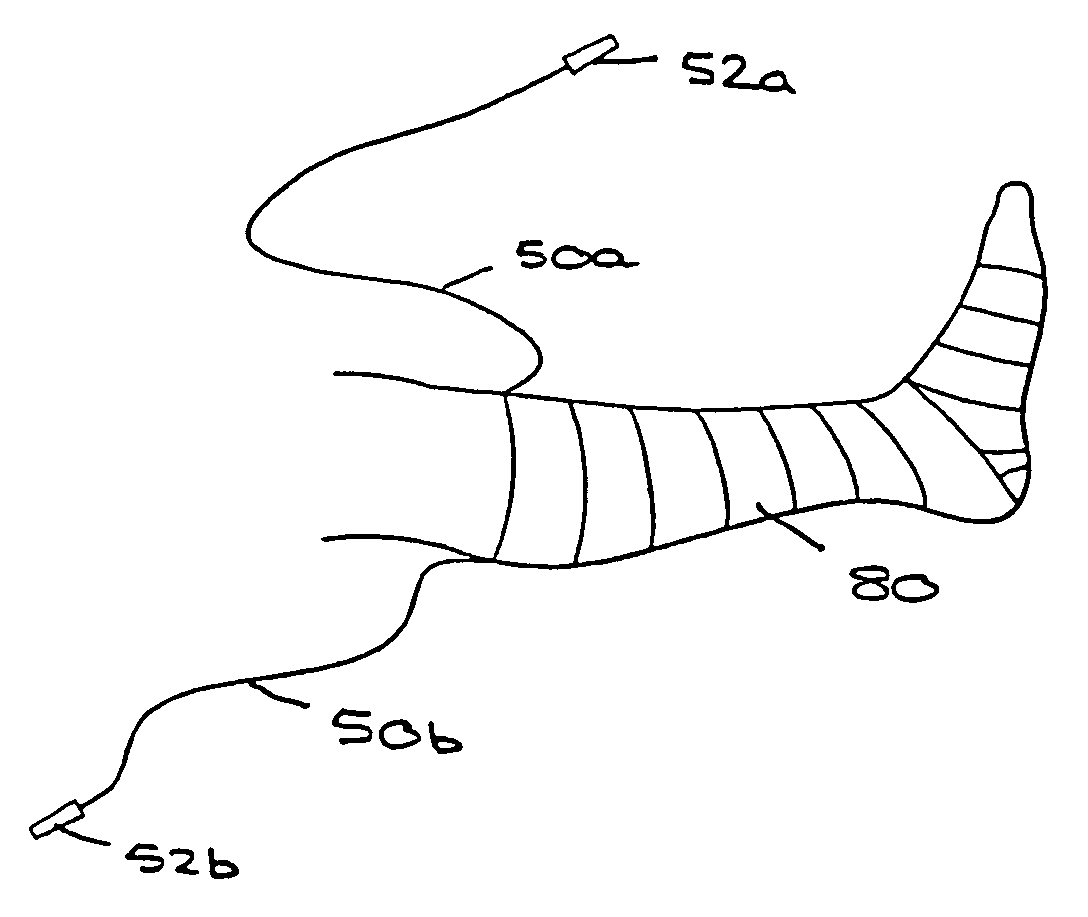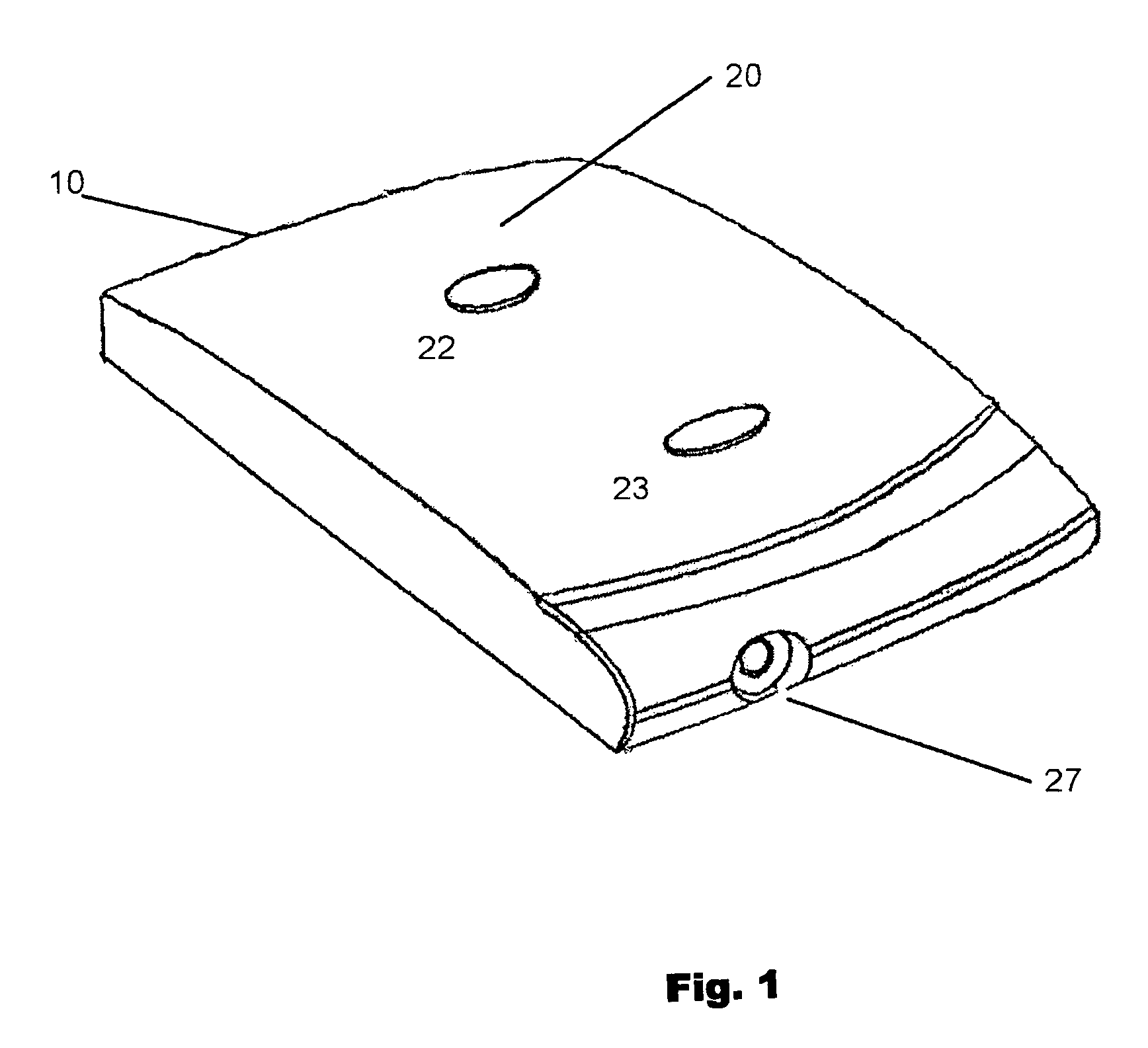Method and apparatus for treating a wound
a wound and wound technology, applied in the field of wound treatment methods and equipment, can solve the problems of high prevalence of active venous ulcers in the adult population, and high cost of healthcare services treatment, so as to promote the healing of venous ulcers, promote wound healing, and promote the effect of wound healing
- Summary
- Abstract
- Description
- Claims
- Application Information
AI Technical Summary
Benefits of technology
Problems solved by technology
Method used
Image
Examples
Embodiment Construction
[0040]FIG. 1 is a perspective view of a device 10 for applying electrical signals to an area of tissue according to an embodiment of the present invention. The electrotherapy device 10 comprises a housing 20, an electrode port 27, an input switch 23 and an on / off switch 22. The input switch 23 and the on / off switch 22 may be the push button type. The housing 20 encloses a channel 30.
[0041]FIG. 2 is a schematic diagram of the device 10 showing the channel 30. The channel 30 includes an electrode port 27, a microprocessor 32, a waveform generator 40, LEDs 34 and a beeper 36. The channel 30 is connected to the on / off switch 22, input switch 23, a power supply 60 and a pair of electrodes 50. The electrodes 50 may be of any type known in the art of electrotherapy. The power supply 60 supplies the microprocessor and the rest of the channel 30 with power. The power supply includes a battery which supplies power to the channel 30. Turning on the device 10 via the on / off switch 22 activates ...
PUM
 Login to View More
Login to View More Abstract
Description
Claims
Application Information
 Login to View More
Login to View More - R&D
- Intellectual Property
- Life Sciences
- Materials
- Tech Scout
- Unparalleled Data Quality
- Higher Quality Content
- 60% Fewer Hallucinations
Browse by: Latest US Patents, China's latest patents, Technical Efficacy Thesaurus, Application Domain, Technology Topic, Popular Technical Reports.
© 2025 PatSnap. All rights reserved.Legal|Privacy policy|Modern Slavery Act Transparency Statement|Sitemap|About US| Contact US: help@patsnap.com



